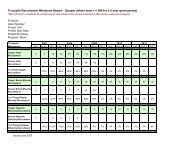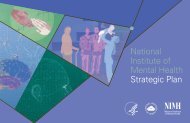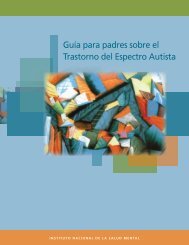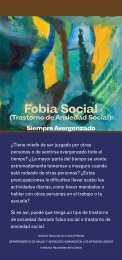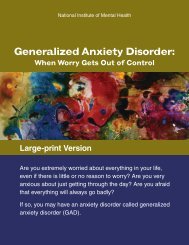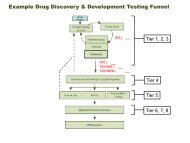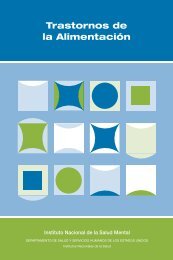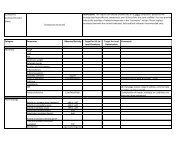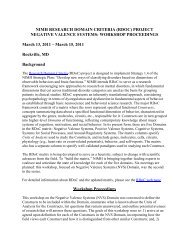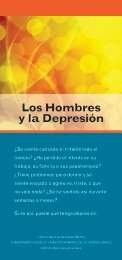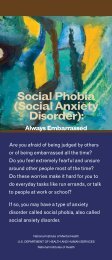Brain's Inner Workings: Teacher's Manual - NIMH
Brain's Inner Workings: Teacher's Manual - NIMH
Brain's Inner Workings: Teacher's Manual - NIMH
You also want an ePaper? Increase the reach of your titles
YUMPU automatically turns print PDFs into web optimized ePapers that Google loves.
Apply and Extend<br />
There are many authentic connections that can be made when students study neurotransmitters. They can<br />
monitor their own responses to common situations like eating, exercise, or scary movies by charting and<br />
comparing blood pressure and heart rate over time.<br />
Another important extension should involve the way that<br />
drugs can alter the way in which neurotransmitters are<br />
released and sensed by cells. The diagram illustrates the<br />
interference of morphine and opiate receptors on the cell.<br />
Another connection involves use of alcohol:<br />
• Alcohol blocks reception of glutamate,<br />
preventing the hippocampus from changing<br />
short-term memories to more permanent ones.<br />
• Alcohol enhances the receptor mechanisms for<br />
GABA, making most people sleepy. But when<br />
chronic drinkers try to quit, they can’t relax<br />
because their nervous systems become used to<br />
the more intense effects.<br />
Game On?<br />
Researchers at Stanford University<br />
School of Medicine are studying how<br />
video games trigger the release of<br />
neurotransmitters in the brain. They<br />
have found that the responses of men to<br />
games was far stronger than the responses<br />
of women. The nucleus accumbens of<br />
their brains sometimes released levels of<br />
neurotransmitters comparable to addiction!<br />
• Serotonin helps the brain moderate moods<br />
and aggression. Alcohol’s effects on serotonin<br />
receptors are thought to be involved in the<br />
rewarding effects of alcohol.<br />
• Dopamine is a reward neurotransmitter.<br />
It’s also one that helps us associate subtle<br />
environmental cues with pleasurable<br />
memories—like “mom’s chicken soup.”<br />
Some pharmacologists believe that the<br />
association of places with past drinking<br />
experiences contributes to craving.<br />
Image source: http://www.nida.nih.gov/pubs/<br />
teaching/Teaching2/largegifs/slide17.gif<br />
All these changes confuse a system that originally<br />
evolved for survival.<br />
For further information on the neurobiology of addiction, go to http://www.nida.nih.gov/pubs/teaching/<br />
Teaching2/Teaching4.html.<br />
20 The Brain’s <strong>Inner</strong> <strong>Workings</strong>: A Guide for Teachers<br />
Na t i o n a l Institute of Me n t a l He a l t h



